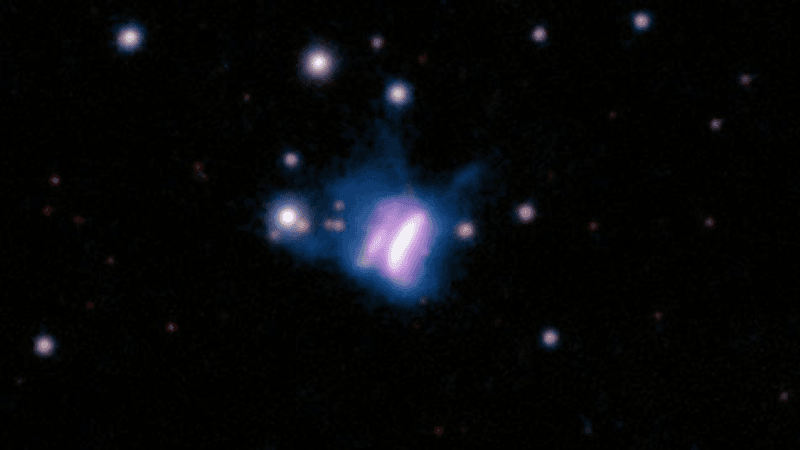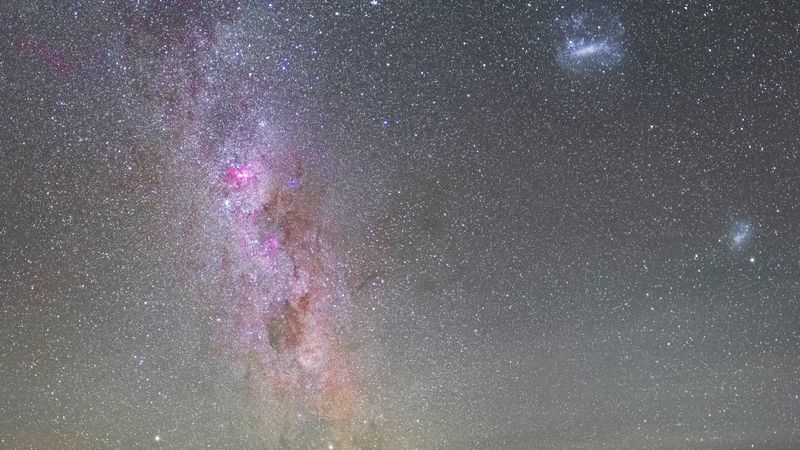Astronomers scouring through images taken by NASA’s Cassini spacecraft last year have discovered a fleeting bright spot in one of the seas of Saturn’s moon, Titan. The intriguing feature, which has been coined "Magic Island," had never seen observed in this sea before and it vanished again some days later. Although the scientists are uncertain of its identity at the moment, they speculate that it could be a glimpse of dynamic geological processes occurring in the northern hemisphere. The study has been published in Nature Geoscience.
Titan, the largest of Saturn’s 62 moons, is an intriguing and strangely Earth-like world that has sparked great interest from scientists in recent years. It is shrouded in a thick, golden atmosphere of mostly nitrogen that is reminiscent of an early Earth and it has an extensive system of lakes, seas and rivers filled with liquid ethane and methane.
Almost a year ago, Cassini snapped a series of images of Titan including some its second-largest sea, Ligeia Mare, which were sent to the Jet Propulsion Laboratory at Caltech for processing and analysis. Whilst flicking through the images and comparing them to older data to look for any changes, researchers discovered a curious bright spot in Ligeia Mare that was not present in images taken before the July 2013 observation.
The bright feature was around 12 miles long and 6 miles wide and was located about 6 miles off the southern shore. It was present in one image taken on 10 July but it had vanished in a subsequent data set taken on 26 July. Furthermore, prior to the 10 July observation, Ligeia Mare was as still as a statue and was completely devoid of ripples or waves.
The scientists ruled out that the blob could be due to errors in the imaging equipment and have been racking their brains to come up with ideas for what it could be. Titan’s northern hemisphere is currently undergoing a transition from spring to summer, which could be responsible for the bright feature. In light of this, the team has proposed four hypotheses that they believe could explain the phenomenon.
The first idea is that waves may be picking up due to the seasonal transition; if this is the case then the image would be the first observation of deep-sea waves on this moon. Warmer weather brings with it stronger winds, therefore it is possible that as the northern hemisphere starts to heat up the winds are kicking up waves in the sea.
“The sun is shining brighter, and that energy can be powering the winds,” lead author Jason Hofgartner told The Guardian. “All you would need is a light breeze, around half a meter per second.” However, he also doubts that the winds could ever be strong enough to produce substantial waves .
Alternatively it is possible that it is some of the solid material that is in suspension in the sea, or frozen material that has started to rise to the surface as the northern hemisphere warms. Lastly, it is also feasible that it could be a surge of gas released from the sea floor which would ascend to the surface as bubbles.
“Likely, several different processes- such as wind, rain and tides- might affect the methane and ethane lakes on Titan. We want to see the similarities and differences from geological processes that occur here on Earth,” Hofgartner said in a news-release. “Ultimately, it will help us to understand better our own liquid environments here on Earth.”
[Via Cornell University, Nature Geoscience and The Guardian]



